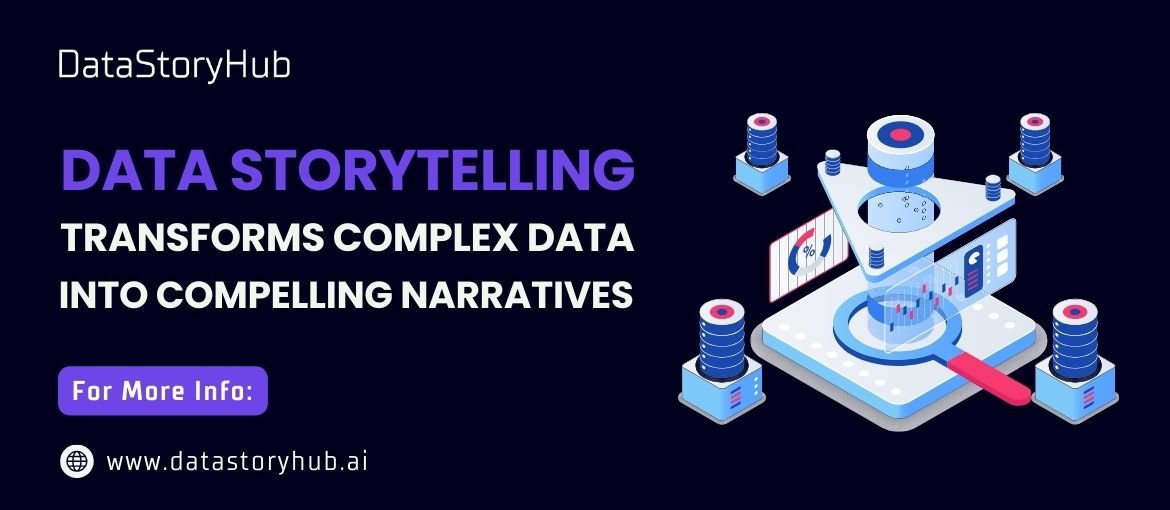In the ever-evolving digital era, the ability to interpret and present data effectively has become a game-changer for businesses, researchers, and policymakers alike. At the heart of this transformation lies the art of data storytelling. By weaving together data, visuals, and narrative, data storytelling transforms complex data into compelling narratives that not only convey insights but also drive strategic decision-making.
What Is Data Storytelling?
Data storytelling is the practice of translating intricate datasets into an understandable, engaging, and actionable story. It blends three key elements:
- Data: The factual backbone, providing credibility and depth.
- Visualization: The graphical representation that makes patterns and trends visible.
- Narrative: The human-centered context that delivers meaning and emotional impact.
Together, these components ensure that even the most complex data points become accessible and memorable.
Why Data Storytelling Matters
As organizations increasingly rely on data to inform their strategies, the sheer volume of information can often feel overwhelming. Decision-makers need more than numbers; they need context. Here’s how data storytelling transforms complex data into compelling narratives and aids in strategic decision-making:
- Simplifies Complexity: Data storytelling breaks down intricate datasets into digestible insights, making it easier for audiences to grasp the key takeaways without a deep technical background.
- Engages and Inspires: A well-crafted narrative captures attention and resonates emotionally, which helps in persuading stakeholders and driving action.
- Supports Decision-Making: By presenting clear insights aligned with business goals, data storytelling enables leaders to make informed, confident decisions.
- Promotes Collaboration: Story-driven insights are easier to share and discuss, fostering alignment across teams.
The Process of Crafting a Data-Driven Narrative
To effectively create a narrative where data storytelling transforms complex data into compelling insights, follow these steps:
- Understand Your Audience: Identify what matters most to your stakeholders. Are they looking for actionable strategies, market trends, or performance metrics?
- Analyze the Data: Dive deep into the datasets to uncover hidden patterns, anomalies, and correlations.
- Choose the Right Visuals: Use charts, graphs, and infographics tailored to your audience. Avoid clutter and prioritize clarity.
- Build the Narrative: Frame your insights with a beginning (the problem or question), middle (the discovery or analysis), and end (the solution or action).
- Iterate and Test: Share your story with a small group first to gather feedback and refine your approach.
Tools That Empower Data Storytelling
Modern tools have made data storytelling more accessible than ever. Platforms like Tableau, Power BI, and Google Data Studio offer user-friendly interfaces for creating visually engaging dashboards. Meanwhile, programming languages like Python and R enable more customized visualizations and analyses for advanced users.
Real-World Examples
- Healthcare: Hospitals use data storytelling to track patient outcomes, optimizing care pathways and reducing costs.
- Retail: E-commerce businesses leverage storytelling to analyze customer behavior and tailor personalized shopping experiences.
- Public Policy: Governments utilize storytelling to present the impact of social programs, helping stakeholders understand and support initiatives.
The Future of Data Storytelling
As artificial intelligence and machine learning evolve, the future of data storytelling promises even greater possibilities. Automated tools can generate narratives directly from data, while advancements in natural language processing (NLP) enhance the clarity and relatability of insights. Regardless of the technological progress, the core principle remains unchanged: data storytelling transforms complex data into compelling narratives that inform, inspire, and drive action.
Conclusion
In today’s data-driven world, storytelling isn’t just a skill; it’s a necessity. By mastering the art of crafting narratives that resonate with your audience, you ensure that your insights don’t just sit in a spreadsheet but actively shape decisions and outcomes. As you refine your ability to create stories where data storytelling transforms complex data into compelling messages, you’ll unlock unparalleled potential for growth and innovation.

Leave A Comment